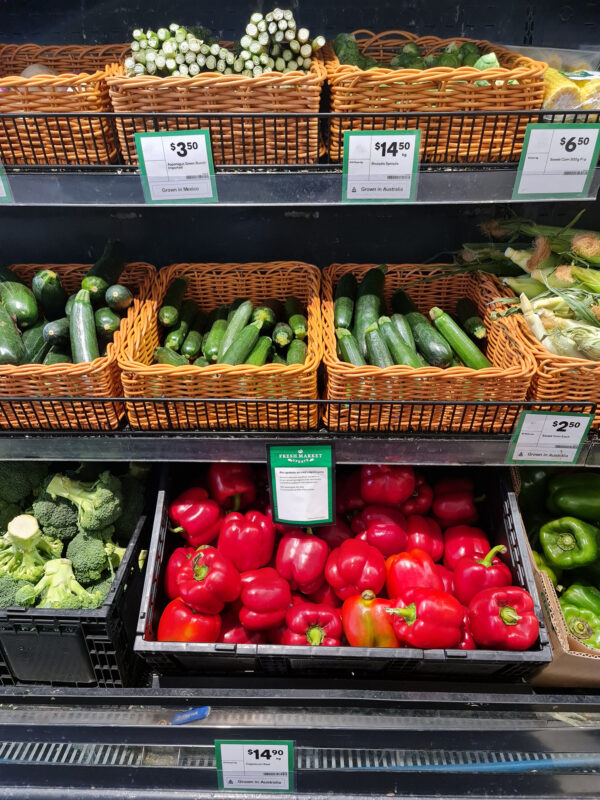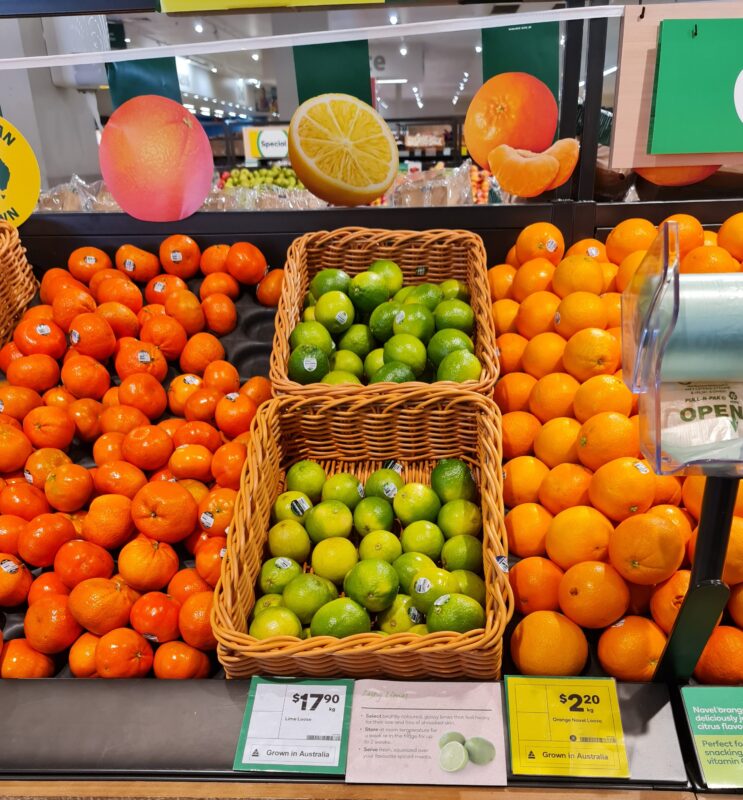Unless you’ve been hiding under a rock you will have noticed the cost of fruit and vegetables across Australia have gone up substantially over the last few months, especially when purchased from the major retailers. Media coverage has also been rife and lots of reasons given for the price hikes. Here’s a simple break down of what’s been going on and why it has impacted the cost of goods
Inflation
Put simply inflation represents how much more expensive goods or services have become over a certain period of time. The current rise in inflation is in part due to growing global demand for goods as the world comes out of COVID-19 restrictions. Couple that with the unfortunate events in Ukraine, this has led to sharp increases in the price of food and energy – factors that retailers have blamed for the increase in prices in your shopping basket

High input costs
What’s an input cost? Well, have a think about what farmers need to invest in order to actually grow their fruit and vegetables in the first instance.
Fertiliser is a great example. Reports indicate the price for fertiliser has tripled since the dispute between Russia and Ukraine began.
There has also been a global spike in the price of coal and gas, which is still used to generate most of Australia’s electricity. Once grown and picked, many growers have to absorb the increased energy costs to power their machinery and packing sheds.
Added to this, the supply of electricity has been unstable. Unplanned outages at power stations and extreme weather events have meant less electricity is being produced than usual.
The combination of these factors has meant that the cost of producing electricity has risen, at the same time there’s been less supply available. High demand, as well as more expensive materials (coal) have led to higher energy process.
Finally, let’s not forget that growers and retailers need to get their produce to distribution centres or markets. Fuel price hikes, especially the last 6+ months, have to be recovered.
From fertilisers to energy to fuel, these are the types of costs farmers need to pay for to get their produce to us as consumers. And if they can, they need to consider how they can get this money back otherwise their profit margins contract and the viability of running their business becomes a significant headache.
Weather events
If you’re on the east coast of Australia then you’ll know about weather – 2022 has seen record rain fall in many parts of NSW and QLD, this coming off a very wet 2021 as well.
Many people may believe the rain can’t be a bad thing for farmers. After all, Australia is known for its hot sun and debilitating droughts. However, where there’s rain, and record levels of it, there are many challenges to contend with including water run-off and flooding. Any farm that has sloping fields will see water wash away the top layer of soil, in lots of cases taking essential nutrients with it. Then of course, rain water will pool and flooding will occur.

Let’s also not forget where there’s rain, there’s cloud cover – and clouds prevent the sun from doing its job of being a key energy source in allowing photosynthesis to occur which helps plants grow (that’ll take you back to your science classes at school!).
The clean-up job after a significant weather event can also be challenging – if your fields have taken on a lot of rain, you’ll need to wait for the ground to dry out before you can get machinery on there – that machinery might be for essential works such as spraying fertilisers, or for the tidy-up and clean-up of debris caused by storms. Not being able to maintain your crops can mean issues with production levels.
Supply & Demand
The result of growers struggling with input costs and weather events is that in many cases there is less produce available for consumers. The major retailers will grade fruit and vegetables and only sell the best quality in terms of look and size. When that is compromised and there is less higher produce available, then prices for those products go up to create consumer competition.
It’s the same for produce that is only available at certain times of the year – most fruit such as citrus, apples, cherries, grapes and berries are grown at specific times of year so there is an abundance of fruit available at its peak. However, at either end of the peak, you’ll notice the price of these commodities is significantly more due to the simple maths of supply and demand.
It’s a complicated world for farmers, retailers and us as consumers. Inflation is undoubtedly the key driver, and farmers are doing it tougher than they have in a long time.
Unfortunately, the outlook for the rest of 2022 doesn’t look great right now so where possible continue to buy local to help your local Aussie farmers.
